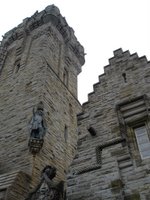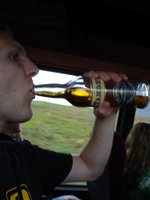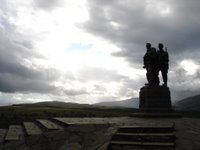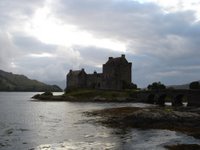Went to a special screening of
28 Days Later on Friday, with the director Danny Boyle in attendance. A really great film, and I thoroughly enjoyed watching it again. Was interesting to see Christopher Ecclestone playing the villain after I'd gotten used to him playing Doctor Who!

Danny gave a little interview afterwards, with some audience Q&A. Like Gary Oldman, he was also very down-to-earth with intelligent and insightful answers. I only wish it could have been a longer. Danny strikes me as the kind of guy you could enjoy having a few beers with.
As with Gary, here's the best of my recollections. Sadly these are three days after the fact, and I've had a crazy weekend in between!
On filming 28 Days Later - Made for only £8 million. A "cheap" film, relatively, and made to put the big budget
The Beach behind him. Most common question he gets asked is how he managed to film in an abandoned London central. (A nice change for him, as previously he would be asked about the toilet scene in
Trainspotting.) They shot at 4am in the morning, in June, when the light is surprisingly good. There was still a reasonable amount of traffic though, and the London council won't close down streets for small productions. However, they were allowed to 'ask' people to keep out of shot. Luckily, they hired a bunch of female students to do this job. It seems that most early morning traffic in London is comprised of burly truck drivers, who don't mind being directed by pretty girls.
On the chimpanzees - Apparently there are only a couple of places in the world where you can film chimpanzee 'actors'. One is in LA, where they filmed the PG Tips ads. The other is in northern Europe somewhere (I forget where, exactly), a chimp circus. The handler allowed the chimps to get used to the cages first, and then they filmed on site. The scenes with the scary chimps freaking-out? They're actually happy, and have just been made to sound terrifying.
On the script - Alex Garland is a big Romero fan, and stays up all night watching zombie films. Danny isn't really into zombie films, and mentioned several times that he doesn't consider
28 Days Later to be a zombie film. It is a thriller.
On the ending(s) - When filming, they ran out of money to shoot the scripted ending (what appears in the film). Instead, they shot a variation where Jim dies. This was exceedingly bleak, and the American distributors asked if there was any way Danny could change the ending. Yes, of course, he said. Give me some more money!
Film stock - The film is famously shot on cheap £1,000 digital cameras. Danny tested the idea on a couple of short films (one starring Chris Ecclestone), and was pleased with the results, so bought 15 for
28 Days Later. This enabled him to shoot a number of variations, and was invaluable during the London shoot, because it enabled him to make the sequence look a lot longer on film that it was in reality. The final end sequence was shot on 35mm, intended to be a luxurious contrast to the rest of the film. However, it was an overcast day, so the effect didn't really work. He tried a similar thing on his new film
Sunshine by going from 35mm to 70mm . This also didn't work.
On 28 Weeks Later - This is a sequel, being shot now in London. Alex Garland is one of the 3 writers, so it should have some of the feel of the original. They are filming in 16mm to give it a unique look, like the original. Danny will be doing some second unit direction. (He is going stir crazy editing
Sunshine over several months.) Will we see a Danny Boyle mark on the film, then? No! He'll just do what he's told.
On Alien: Resurrection - He was said to be filming this at one stage, but pulled out. I got a chance to ask him why. Apparently the script was too CGI heavy for him. Ironically,
Sunshine is very CGI heavy, but he says the timing wasn't right back then. A Danny Boyle
Alien film could have been very interesting...
Went and said hello afterwards. All my DVDs are in New Zealand, so I asked him to sign my ticket stub instead. Was able to pass on Frank's glowing sentiments about
A Life Less Ordinary. What a cool guy. (Danny, that is, not Frank.)
NZ WATCH: Turns out
28 Days Later did all its previewing in New Zealand (!). And we didn't like it much, so he made a lot of changes. I apologised, and explained that Anna and I both really liked it.
PS: Danny is from Manchester. I always thought he was Irish or Socttish for some reason.
 Imagine my surprise when Cherry Coke seemed to vanished from the UK over the last couple of months. You heard right! Despite having come all this way expecting to enjoy the bountiful softdrink supplies that the British Empire has to offer, apparently fate had it in for me. Where did all the Cherry Coke go? Once it was available in all the little dairies. Now it was nowhere to be seen - expect as 355ml 6 packs of Diet Cherry Coke (yuck!) at Sainsbury's.
Imagine my surprise when Cherry Coke seemed to vanished from the UK over the last couple of months. You heard right! Despite having come all this way expecting to enjoy the bountiful softdrink supplies that the British Empire has to offer, apparently fate had it in for me. Where did all the Cherry Coke go? Once it was available in all the little dairies. Now it was nowhere to be seen - expect as 355ml 6 packs of Diet Cherry Coke (yuck!) at Sainsbury's.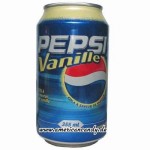 My theory was that, with the triumphant launch of Coke Zero, the UK found itself unable to support surplus softdrink brands, and my beloved was the first to suffer from the over-flooded market. However, I am in luck! As the initial burst of Coke Zero enthusiasm fades, Cherry Coke seems to be making a comeback! At first it was just the weird German version with the ugly label, but now I have found a supplier of the genuine article in both cans and bottles. Hooray! Time to stockpile!
My theory was that, with the triumphant launch of Coke Zero, the UK found itself unable to support surplus softdrink brands, and my beloved was the first to suffer from the over-flooded market. However, I am in luck! As the initial burst of Coke Zero enthusiasm fades, Cherry Coke seems to be making a comeback! At first it was just the weird German version with the ugly label, but now I have found a supplier of the genuine article in both cans and bottles. Hooray! Time to stockpile! Finally, there is also a popular energy drink here called Irn-Bru ("Iron Brew") which, despite being orange, is basically a tasty caffeinated creaming soda.
Finally, there is also a popular energy drink here called Irn-Bru ("Iron Brew") which, despite being orange, is basically a tasty caffeinated creaming soda.





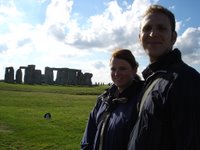





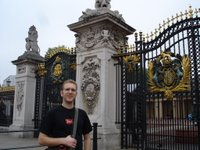












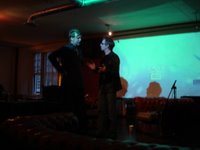 The interview was conducted by Jack English, a photographer and friend of Gary’s. Jack has done a lot of on-set photography, including on Gary’s directorial debut
The interview was conducted by Jack English, a photographer and friend of Gary’s. Jack has done a lot of on-set photography, including on Gary’s directorial debut  All in all, very interesting. I took advantage of the informal setting to introduce myself afterwards. I was able to confirm that his portrayal of Commissioner Jim Gordon in
All in all, very interesting. I took advantage of the informal setting to introduce myself afterwards. I was able to confirm that his portrayal of Commissioner Jim Gordon in 















